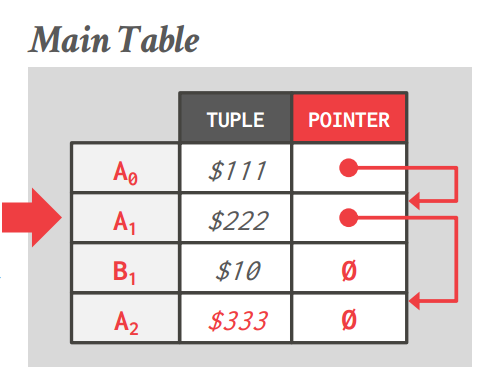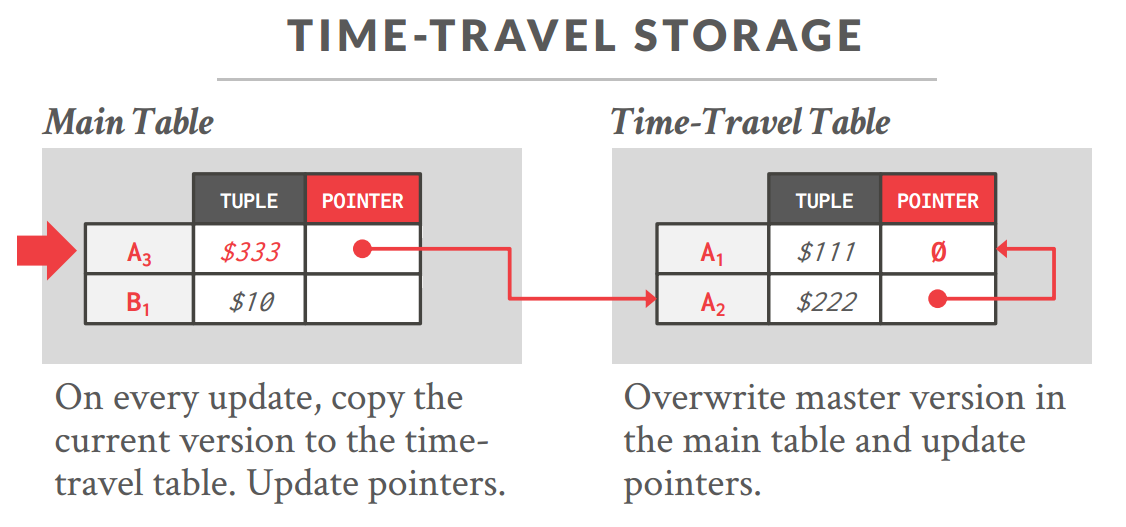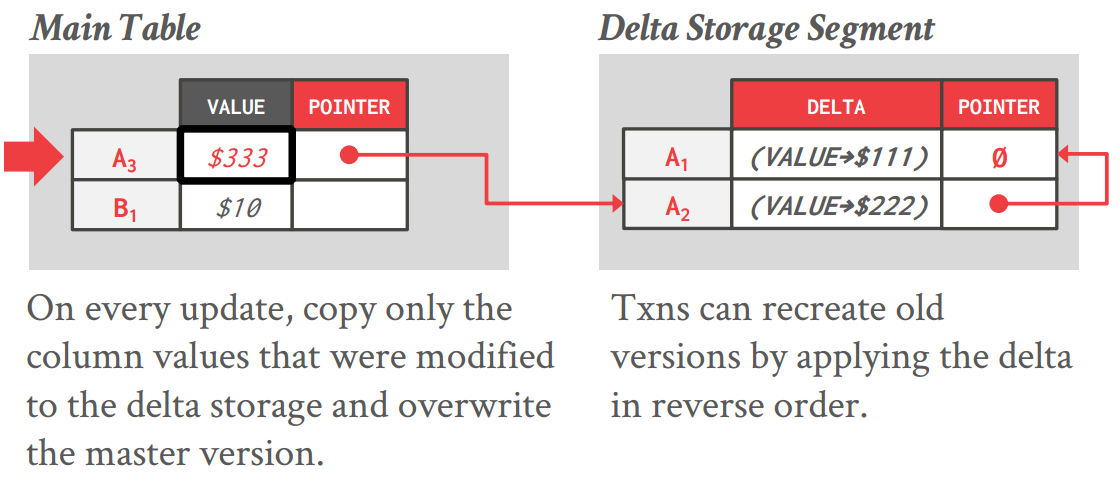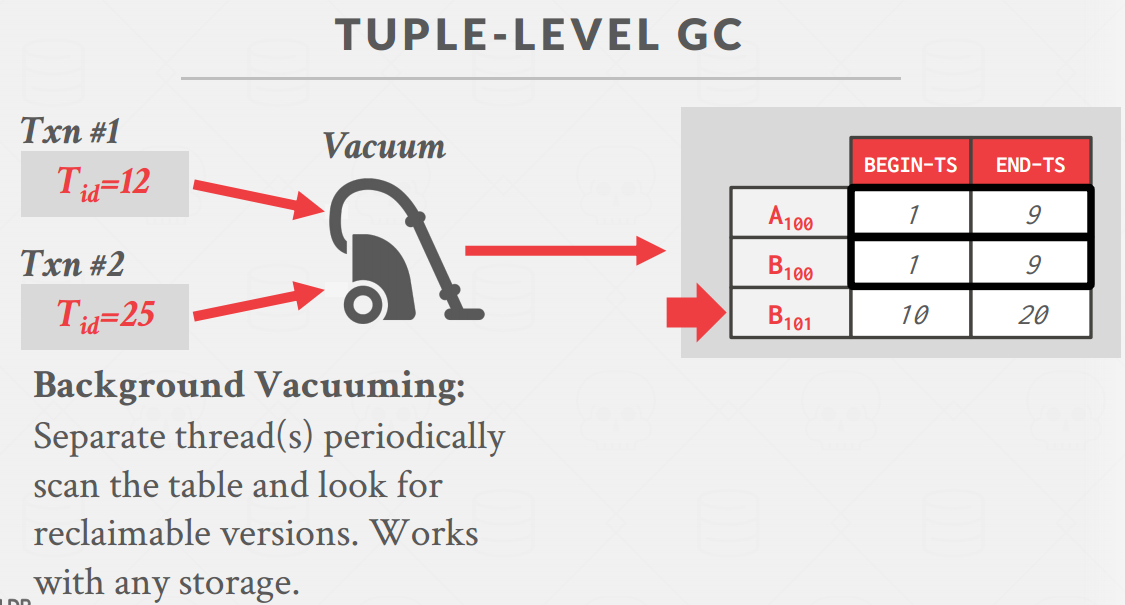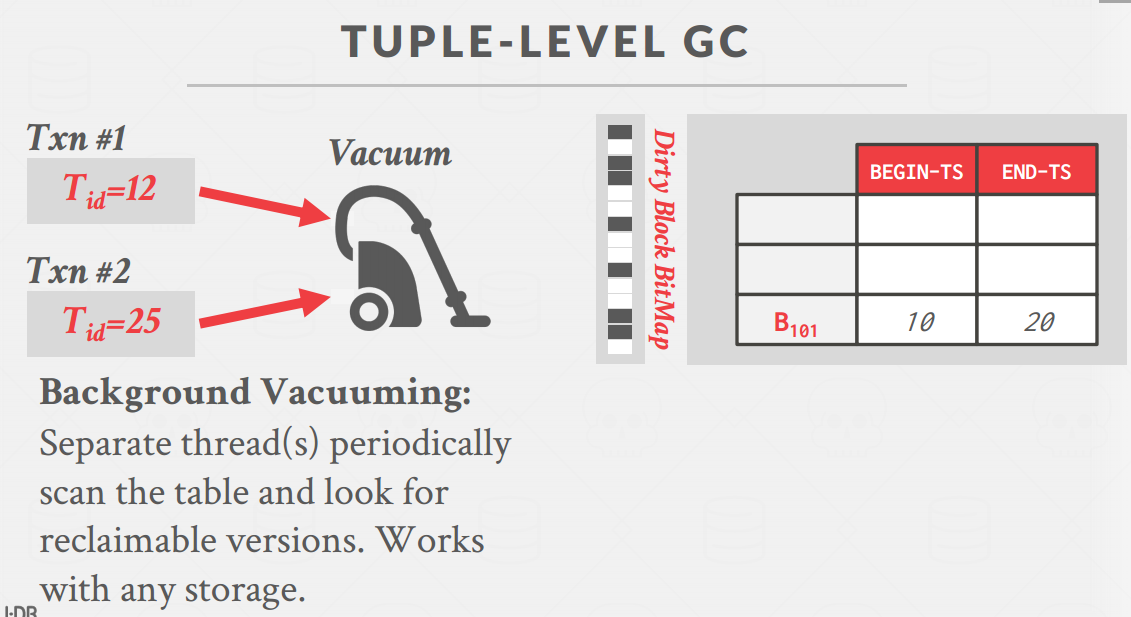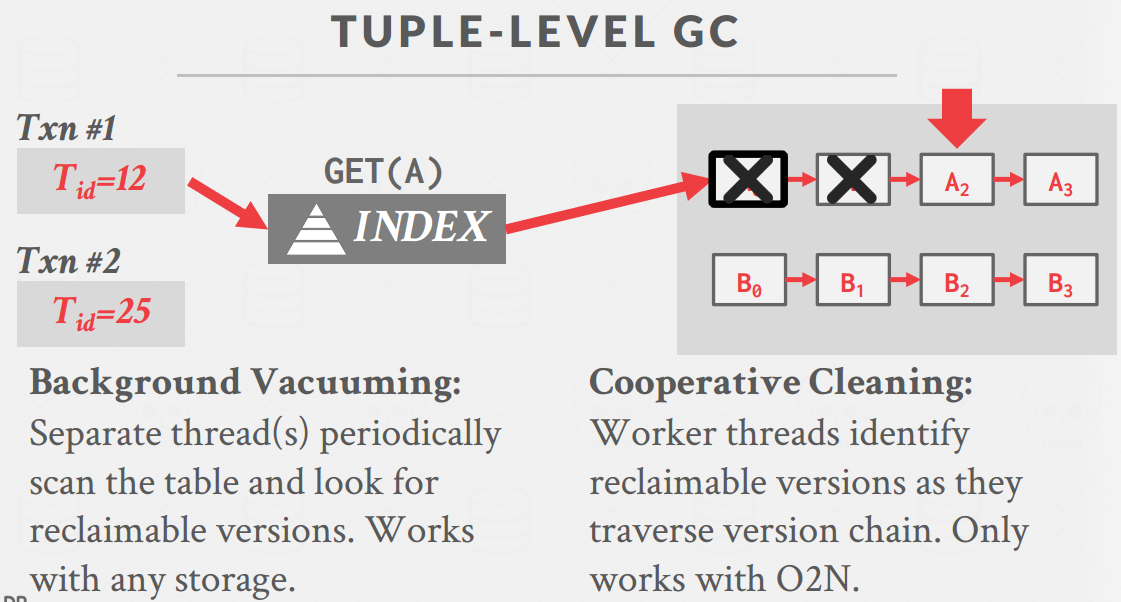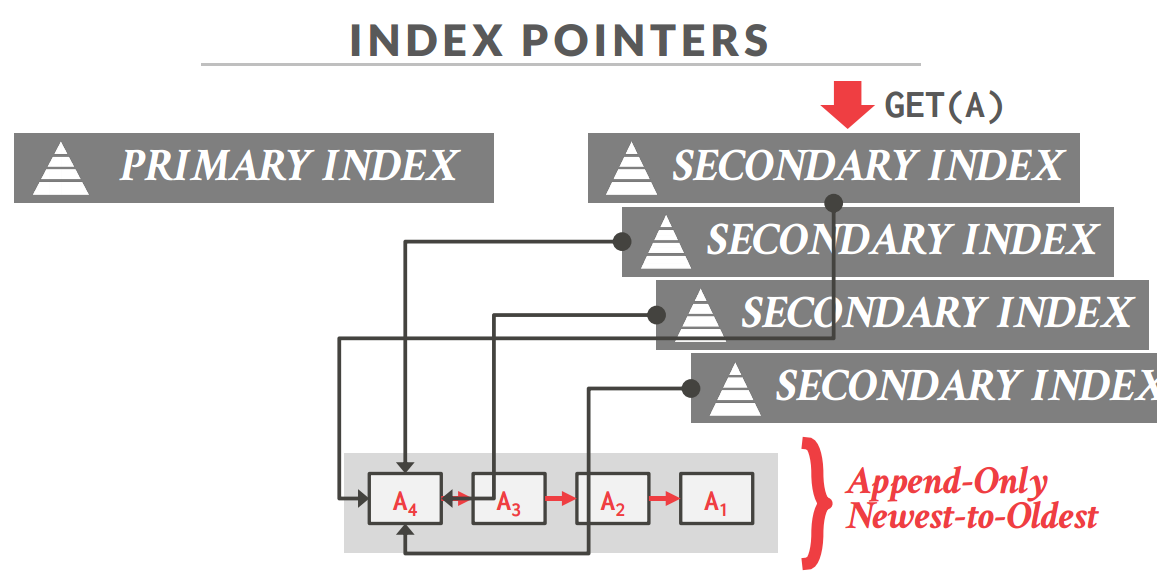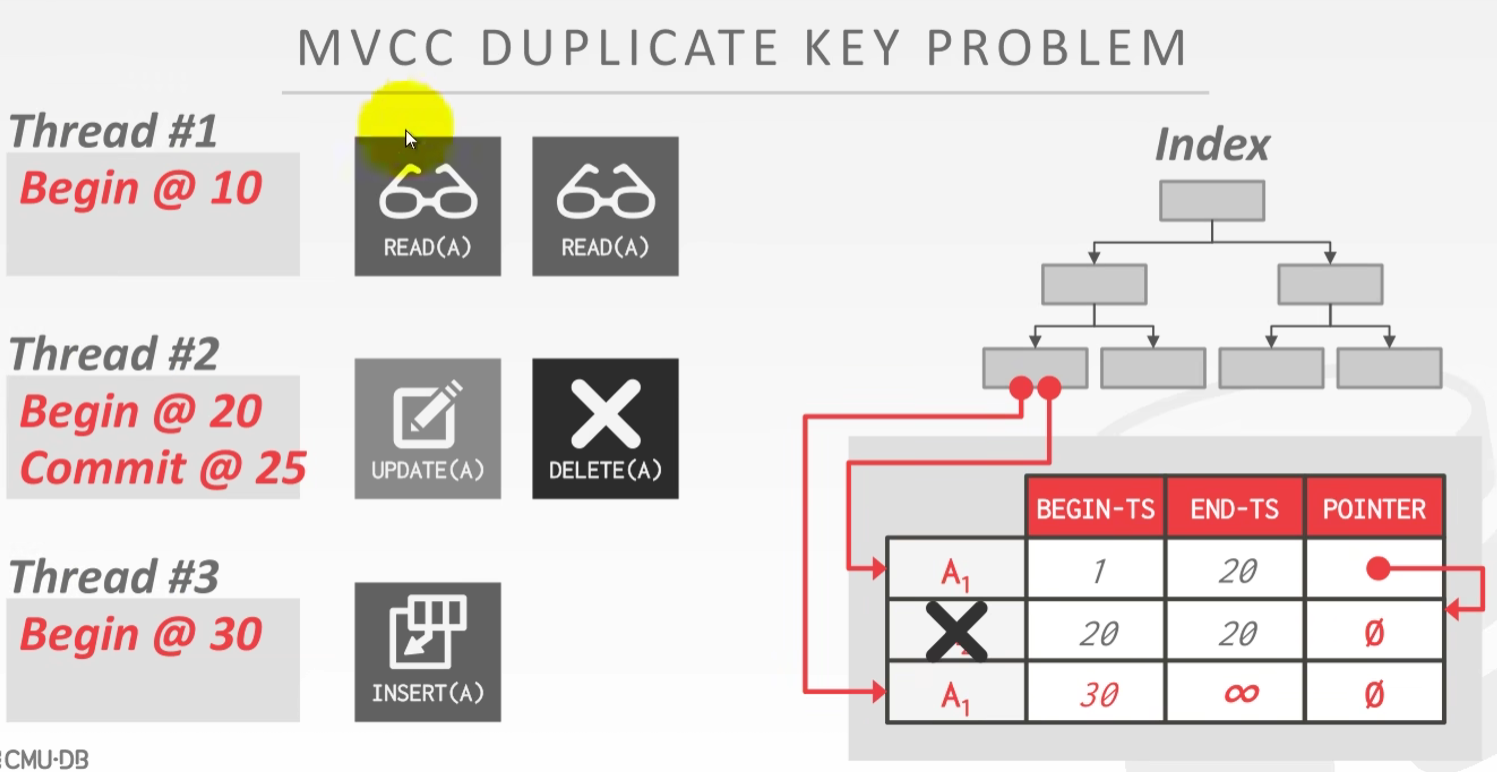CMU 15-445 Lecture #19: Multi-Version Concurrency Control
CMU 15-445 Database Systems
Lecture #19: Multi-Version Concurrency Control
Multi-Version Concurrency Control
-
常常作为2PL和T/O的辅助手段
-
The DBMS maintains multiple physical versions of a single logical object in the database(维护多个历史版本(像git))
-
When a txn writes to an object, the DBMS creates a new version of that object. 不改动,直接创建一个新的版本
-
When a txn reads an object, it reads the newest version that existed when the txn started.
-
First implementations was Rdb/VMS and InterBase at DEC in early 1980s.
→ Both were by Jim Starkey, co-founder of NuoDB.
→ DEC Rdb/VMS is now “Oracle Rdb”.
→ InterBase was open-sourced as Firebird.
-
解决的问题
- Writers do not block readers.
- Readers do not block writers.
- 我去上面读历史版本就是了
-
Read-only txns can read a consistent snapshot without acquiring locks. 好像在读静态数据
- Use timestamps to determine visibility.用时间戳来确定可见性
- MVCC naturally supports Snapshot Isolation (SI).天然支持快照隔离读
-
Easily support time-travel queries.可以读取某一个时刻的历史版本,和IDE退到昨天的代码很像(其他方案很难做到,会把历史数据直接给写没)
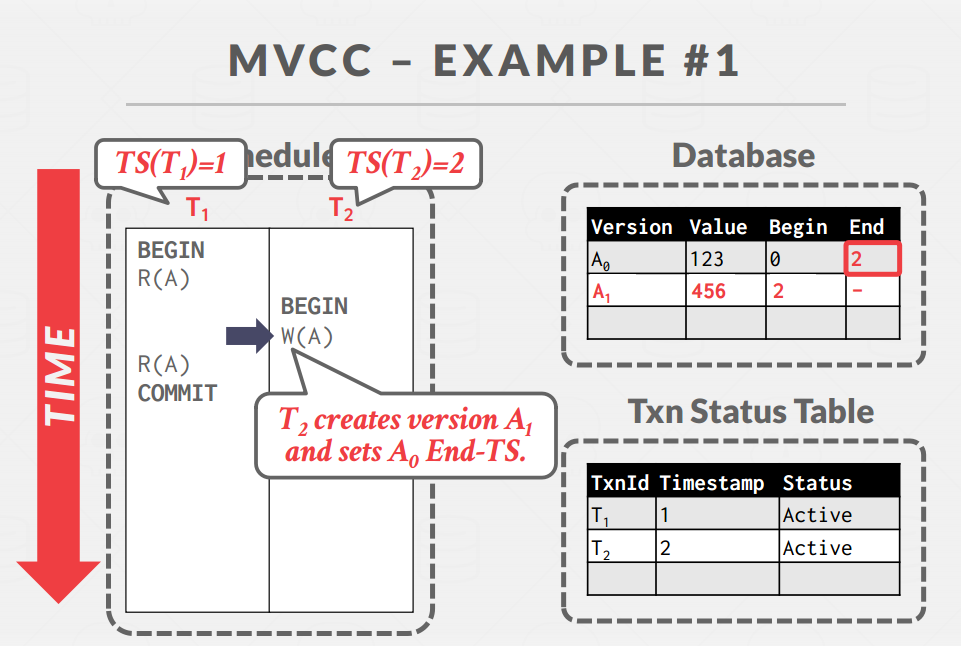
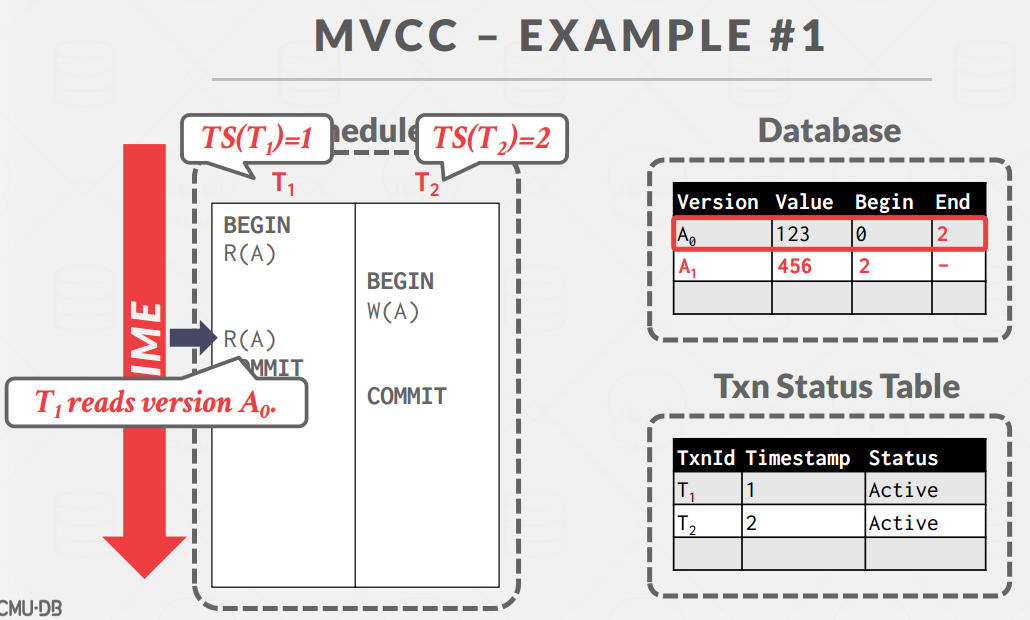

- 从上面的一张图可以看到T1和T2没法做到完全串行化,T2没有读到T1commit上去的数据,所以说只靠MVCC做不到完全串行化,Oracle最高隔离级别就是上面的图,快照隔离
- There are five important MVCC design considerations:
- Concurrency Control Protocol
- Version Storage
- Garbage Collection
- Index Management
- Deletes
- Concurrency Control Protocol
- Approach #1: Timestamp Ordering: Assign txns timestamps that determine serial order.
- Approach #2: Optimistic Concurrency Control: Three-phase protocol from last class,Use private workspace for new versions.
- Approach #3: Two-Phase Locking: Txns acquire appropriate lock on physical version before they can read/write a logical tuple.
Design consideration: Version Storage
- Version Storage
-
The DBMS uses the tuples’ pointer field to create a version chain per logical tuple
- This allows the DBMS to find the version that is visible to a particular txn at runtime.
- Indexes always point to the “head” of the chain.
-
Approach #1: Append-Only Storage: New versions are appended to the same table space.
-

Append-Only Storage - 两种插法:头插法和尾插法,头插法搜索效率高(大部分txn要最新的数据)
-
Approach #2: Time-Travel Storage: Old versions are copied to separate table space.
-
Approach #3: Delta Storage: The original values of the modified attributes are copied into a separate delta record space.
-
Design consideration: Garbage Collection
-
Garbage Collection
-
历史版本不能一直存着(那样存储空间就会被严重浪费),所以需要定期回收无用的历史版本
-
怎么判断无用?
- 现在运行的事务都看不到这个版本了(Snapshot Isolation)
- 创建这个版本的事务回滚了
-
两个问题
- 怎么发现过期的版本?
- 决定何时回收才能保证内存安全?
-
-
Approach #1: Tuple-level
-
Approach #2: Transaction-level
Design consideration: Index Management
-
Primary key indexes point to version chain head
-
修改主键=先删除后插入
-
Secondary indexes
-

删除后再插入也会出现问题 -
Delete
- Approach #1: Deleted Flag: Maintain a flag to indicate that the logical tuple has been deleted after the newest physical version. This can either be in the tuple header or a separate column.
- Approach #2: Tombstone Tuple: Create an empty physical version to indicate that a logical tuple is deleted. Use a separate pool for tombstone tuples with only a special bit pattern in version chain pointer to reduce storage overhead.
-

